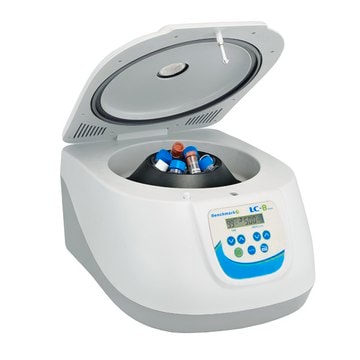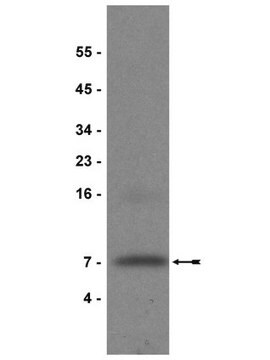MABT323
Anti-CEACAM6 Antibody, clone 1H7-4B
clone 1H7-4B, from mouse
Synonym(s):
CEACAM6, Carcinoembryonic antigen-related cell adhesion molecule 6, Non-specific crossreacting antigen, Normal cross-reacting antigen, CD66c
About This Item
Recommended Products
biological source
mouse
Quality Level
antibody form
purified antibody
antibody product type
primary antibodies
clone
1H7-4B, monoclonal
species reactivity
human
technique(s)
ELISA: suitable
flow cytometry: suitable
immunohistochemistry: suitable (paraffin)
western blot: suitable
isotype
IgG1κ
NCBI accession no.
UniProt accession no.
shipped in
wet ice
target post-translational modification
unmodified
Gene Information
human ... CEACAM6(4680)
Related Categories
General description
Specificity
Immunogen
Application
Flow Cytometry Analysis: A representative lot detected exogenously expressed human CEACAM6 on the surface of transfected CHO cells (Courtesy of Dr. B. Singer, University Duisburg-Essen, Germany).
ELISA Analysis: Representative lots detected CEACAM6 in multivesicular bodies (MVBs) from 2 day-starved HT29 human epithelial cells and T102/3 human colon epithelial cancer cells, as well as in human bronchoalveolar lavage fluid (BALF) samples (Singer, B.B., et al. (2014). PLoS One. 9(4):e94106; Klaile, E., et al. (2013). Respir. Res. 14:85).
Immunohistochemistry Analysis: A representative lot detected CEACAM6 in paraffin-embedded human lung cancer tissue sections (Klaile, E., et al. (2013) Respir Res. 14:85).
Western Blotting Analysis: A representative lot detected CEACAM6 in 2 day-starved HT29 human epithelial cells and HT29-derived multivesicular bodies (MVBs) (Muturi H.T., et al. (2013) PLoS One. 8(9):e74654).
Cell Structure
Adhesion (CAMs)
Quality
Western Blotting Analysis: 0.5 µg/mL of this antibody detected CEACAM6 in 10 µg of HT-29 cell lysate.
Target description
Physical form
Storage and Stability
Other Notes
Disclaimer
Not finding the right product?
Try our Product Selector Tool.
Storage Class Code
12 - Non Combustible Liquids
WGK
WGK 1
Flash Point(F)
Not applicable
Flash Point(C)
Not applicable
Certificates of Analysis (COA)
Search for Certificates of Analysis (COA) by entering the products Lot/Batch Number. Lot and Batch Numbers can be found on a product’s label following the words ‘Lot’ or ‘Batch’.
Already Own This Product?
Find documentation for the products that you have recently purchased in the Document Library.
Our team of scientists has experience in all areas of research including Life Science, Material Science, Chemical Synthesis, Chromatography, Analytical and many others.
Contact Technical Service







